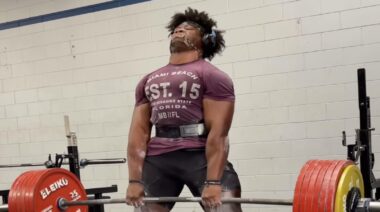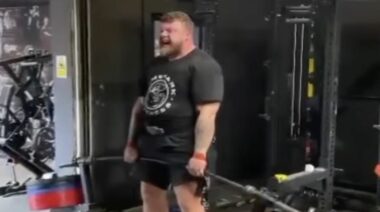The deadlift is an essential human skill. Learn to deadlift well, and you’ll save yourself years of back pain from lifting babies and groceries off the floor wrong. Better still, learn to hinge and then deadlift, and you’ll open up a tremendous world of strength, power, and higher quality movement.
The deadlift is an essential human skill. Learn to deadlift well, and you’ll save yourself years of back pain from lifting babies and groceries off the floor wrong. Better still, learn to hinge and then deadlift, and you’ll open up a tremendous world of strength, power, and higher quality movement.
The deadlift is a phenomenal total body lift, built on a strong foundation of hip hinges and RDLs. I believe you should master that hinge pattern before trying to lift from the ground. Properly executed, the deadlift will greatly increase strength and power, while setting a great framework for many other hinge related lifts. It will give you a vice-like grip, and an iron posterior chain. Whether you’re an athlete, a bodybuilder, a strength competitor, or just someone wanting a more quality lifestyle, the deadlift is as good as it gets.
Unfortunately, not everyone is taught how to deadlift correctly. Simply mimicking what you think you see is a recipe for disaster. For most people, the deadlift looks like someone just walks up and pulls a bar off the floor, but that is already a misconception: it is a push, not a pull. The arms should be locked, connecting you to the bar. From there, the work is done by the legs pushing and the hamstrings and glutes contracting to extend the hip.
To clear up common faults and help teach this pattern I use the deadlift checklist. It breaks down the steps of the deadlift to promote optimal execution that ensures both safety and consistent progression.
I use the checklist to teach the deadlift to my athletes in groups, with two athletes per bar. This serves as a great opportunity to teach responsibilities as a partner, and teach your athletes to be coaches on the floor.
The Deadlift Checklist
Like a pilot’s checklist, we must be ready for takeoff and focused on specific objectives throughout flight:
Part 1: Before Takeoff:
- Bar over laces
- Bend into an athletic position, with your chest over knees over toes
- Grab the bar with an alternated grip
- Retract your shoulder blades, taking the slack out of the bar
- Push your knees out against your elbows
Part 2: During Flight (Performance Cues):
- Push through your heels, rather than pull through your arms and back
- Drag the bar tight along the body. The bar path is vertical.
- Knees extend, then hips extend while shoulders and torso keep pace
As I explained in the video, I’ve found two-inch pause deadlifts to be a useful addition to the deadlift checklist. Even with experienced deadlifters, I program a warm-up set of pause deadlifts, during which the partner cues each line of the checklist. This helps increase engagement and focus from all parties and makes the cues fresh in their minds.
When working with absolute newbies, I’ll have them reverse the movement on my command. This way, they learn to hinge to bring the bar to their knees, and then flex their knees as they bring the bar to the ground.
Deadlifts Are for Everyone
While I believe everyone should know how to deadlift, not everyone must do it the same way. I have a handful of athletes who only deadlift with a sumo-stance or hex bar, due to mobility issues. Athletes with a history of pars fractures or recurring back pain move to single-leg deadlifts and GHD work.
For these exercises, the foundation and steps are basically the same. In many cases, I’m able to use an injury or restriction to an athlete’s advantage, correcting movement faults or strength imbalances.
Execution is paramount for performance gains and safe training. The deadlift checklist ensures that you focus on the essential elements of the lift, so you can get the most carry over with the least time invested. The deadlift is one of those foundational skills that are worth the time invested to learn.
It lays a framework for all future Olympic lifts and kettlebell movements. It creates awareness and strength from the athletic position, and most of all, it’s a skill that is used throughout life in some form or fashion. Take the time to learn and perform it with skill and precision.






